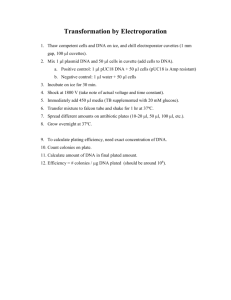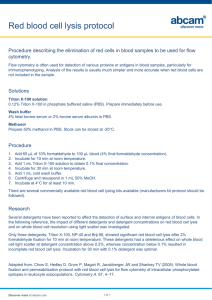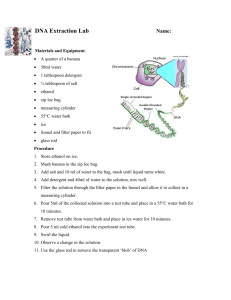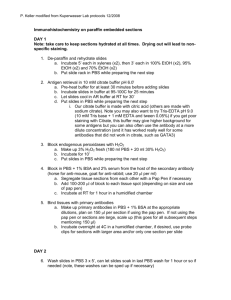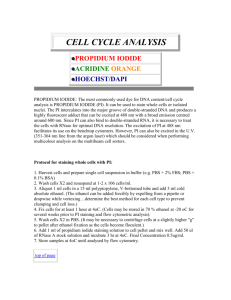DNA-Cell Cycle Analysis
advertisement
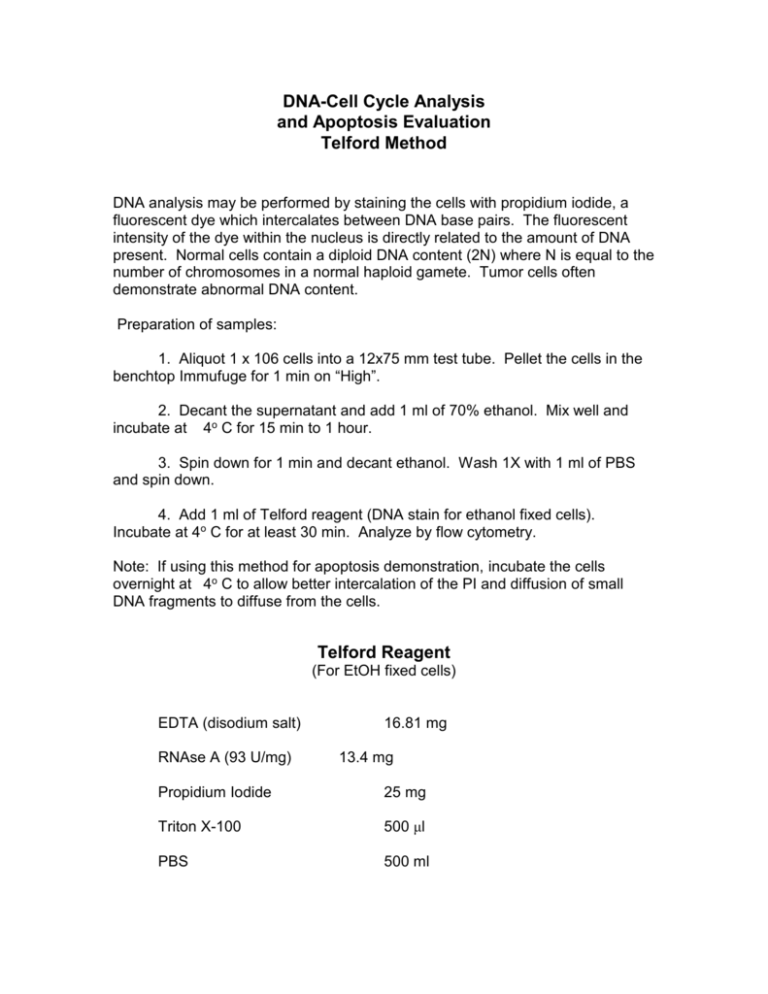
DNA-Cell Cycle Analysis and Apoptosis Evaluation Telford Method DNA analysis may be performed by staining the cells with propidium iodide, a fluorescent dye which intercalates between DNA base pairs. The fluorescent intensity of the dye within the nucleus is directly related to the amount of DNA present. Normal cells contain a diploid DNA content (2N) where N is equal to the number of chromosomes in a normal haploid gamete. Tumor cells often demonstrate abnormal DNA content. Preparation of samples: 1. Aliquot 1 x 106 cells into a 12x75 mm test tube. Pellet the cells in the benchtop Immufuge for 1 min on “High”. 2. Decant the supernatant and add 1 ml of 70% ethanol. Mix well and incubate at 4o C for 15 min to 1 hour. 3. Spin down for 1 min and decant ethanol. Wash 1X with 1 ml of PBS and spin down. 4. Add 1 ml of Telford reagent (DNA stain for ethanol fixed cells). Incubate at 4o C for at least 30 min. Analyze by flow cytometry. Note: If using this method for apoptosis demonstration, incubate the cells overnight at 4o C to allow better intercalation of the PI and diffusion of small DNA fragments to diffuse from the cells. Telford Reagent (For EtOH fixed cells) EDTA (disodium salt) RNAse A (93 U/mg) 16.81 mg 13.4 mg Propidium Iodide 25 mg Triton X-100 500 μl PBS 500 ml 1. Obtain a 500 ml bottle of PBS. Add all ingredients but Triton X to the PBS. 2. Put the bottle on a stir plate and drop in a magnetic stir bar. Turn it on and pipet in the Triton X-100 while it’s mixing. 3. After the solution has been mixing for about 10 minutes, wrap the bottle in foil to protect it from the light. Label it with “Telford Reagent”, the date and your initials. Ref: Telford, W.G., King, L.E. and Fraker, P.J. Cell Proliferation 24: 447-459 (1991)


